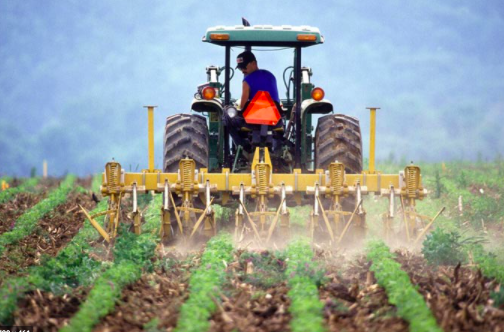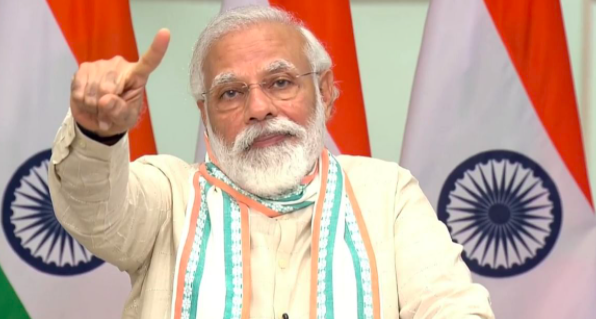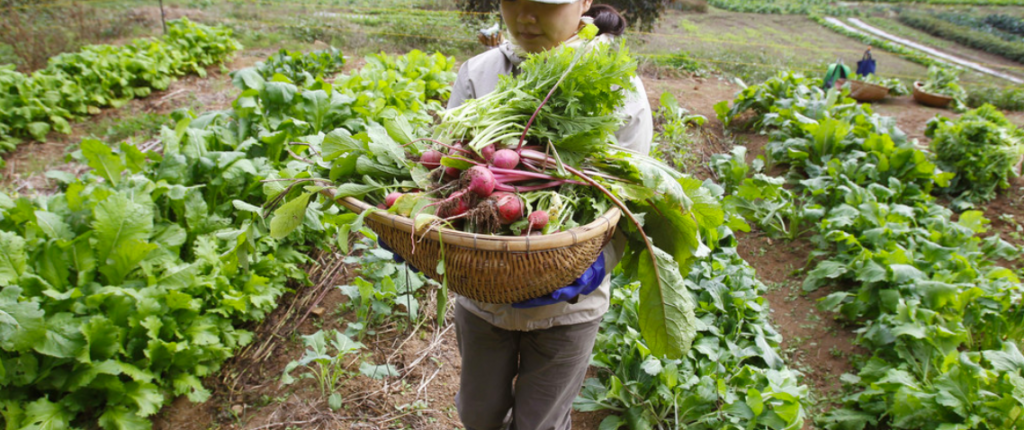Agricultural schemes are schemes introduced by the government to make it easier for farmers to get benefits, pay off debts, increase harvests, better the quality of those harvests and improve their lifestyle, subsequently, in general. These are the important schemes that have been introduced by the government for the agricultural sector:
E- Nam: The National Agriculture Market (eNAM) is a pan-Indian electronic trading platform linking established APMC mandates to establish a single national agricultural commodity market.

The Small Farmers Agribusiness Consortium (SFAC) is the lead agency under the aegis of the Ministry of Agriculture and Farmers’ Welfare of the Government of India for the implementation of eNAM.National Mission for Sustainable Agriculture: The National Mission for Sustainable Agriculture (NMSA) has been formulated to increase agricultural productivity, especially in rainfed areas, with a focus on integrated farming, the efficiency of water use, soil health management and resource conservation synergies.
By implementing the sustainable development roadmap by gradually transitioning to environmentally friendly technology, adopting energy-efficient equipment, conservation of natural resources, integrated farming, etc., NMSA will address main aspects of water use quality’,’ nutrient management’ and ‘livelihood diversification.
Pradhan Mantri Krishi Sinchai Yojana: The Government of India is committed to giving water conservation and its management a high priority. To this impact, Pradhan Mantri Krishi Sinchayee Yojana (PMKSY) has been formulated with the aim of extending the ‘Har Khet ko pani’ irrigation coverage and improving the More crop per drop ‘water use efficiency in a concentrated manner with an end-to-end solution on the creation, distribution, management, field application and extension activities of the source.
National Scheme on Welfare of Fishermen: This scheme was launched to provide fishermen with financial assistance for house-building, recreational community halls and common workplaces. It also aims to instal drinking water tube-wells and help by saving cum relief components during the lean time.
What are the different agricultural schemes in India?
- Soil and health card schemes: The scheme, which was launched in 2015, was implemented to help state governments issue soil health cards to all farmers in the country. The Soil Health Cards provide farmers with details on their soil’s nutrient status, along with suggestions for sufficient doses of nutrients to be used to boost soil health and fertility.
- Pradhan Mantri Fasal Bima Yojana: PMFBY is an actuarial premium-based scheme in which farmers have to pay a maximum premium of 2% for Kharif, 1.5% for Rabi food & oilseed crops and 5% for annual commercial/horticultural crops, and the Centre and State Government share the remaining portion of the actuarial/bidden premium equally. One of the scheme’s goals is to promote timely resolution of claims. The claims must be resolved within two months of the harvest, subject to the timely provision by the State Government of both the yield data and the share of the premium subsidy.
- Kisan Credit card scheme: Another significant government programme that provides farmers with timely access to credit is the Kisan Credit Card scheme. In 1998, the Kisan Credit Card system was implemented to provide farmers with short-term formal credit. The KCC scheme was introduced to ensure compliance with the credit criteria for farmers in the agriculture, fisheries and animal husbandry sectors. Under this scheme, short-term loans are provided to farmers to buy equipment and for their other expenses as well. There are a lot of banks, like SBI, HDFC, ICICI, Axis, that offer KCC.

- National Watershed Development Project for Rainfed Areas (NWDPRA): In 1990-91, the National Watershed Planning Project for Rainfed Areas (NWDPRA) scheme was launched on the basis of twin principles for integrated water management and sustainable farming systems. Intention Natural resource protection, growth and environmental management.
- Sustainable increase of agricultural production and productivity. In the degraded and vulnerable rainfed habitats, restoration of ecological balance by greening these areas through a suitable mix of trees, shrubs and grasses. Reduction of geographical inequalities between the irrigated and rainfed regions and; Creation of sustainable employment opportunities, including landless people, for the rural community
- National Mission for Sustainable Agriculture: NMSA is one of the eight missions under the Climate Change National Action Plan (NAPCC). It aims at promoting sustainable agriculture through climate change adaptation steps, improving the productivity of agriculture, especially in the rainfed areas, with a focus on integrated farming, soil health management and resource conservation synergies.
- As a programmatic intervention, NMSA addresses Project Deliverables, which focuses primarily on conservation agriculture by encouraging location-specific integrated/composite farming systems to make the farm sector more efficient, sustainable, remunerative and climate responsive.
Why the government should spend on agricultural schemes?
Agriculture has been synonymous with cultivating important food crops for decades. Farming above and beyond agriculture currently involves forestry, dairy, fruit cultivation, poultry, beekeeping, mushroom, arbitrary, etc. Today, as part of current agriculture, manufacturing, marketing and distribution of crops and livestock products etc. are all known. Agriculture may also be referred to as agricultural products for cultivation, processing, promotion and distribution.

In the entire life of a given economy, agriculture plays a critical role. Agriculture is the cornerstone of a given country’s economic structure. Agriculture also provides a very significant percentage of the population with job opportunities, in addition to supplying food and raw materials.
Agriculture is the primary source of subsistence for many individuals. Around 70 per cent of individuals are directly dependent on agriculture as a means of living. This high percentage in agriculture is due to the lack of development of non-agricultural activities to absorb the rapidly growing population. Most individuals in developed countries, however, do not engage in agriculture. The key source of national income for most developing countries is agriculture. For developing countries, however, agriculture contributes a lower percentage of their national income to their age.
The key exports of countries depending on agriculture include agricultural products such as sugar, tea, rice, spices, tobacco, coffee, etc. In the case of smooth agricultural production activities, imports are reduced while exports are greatly increased. Since agriculture employs many people, economic development contributes to it. As a result, it increases the amount of national income as well as the quality of living of people. In the agriculture sector, the rapid pace of growth provides a progressive outlook and increased motivation for development.
Therefore, it helps create a healthy environment for a country’s overall economic growth. Economic development, therefore, depends on the growth rate of agriculture. A stable agricultural sector guarantees food security for a country. Food protection is the principal necessity of every government. Food protection reduces malnutrition, which has historically been considered to be one of the major challenges facing developing countries. For their key source of income, most countries depend on agricultural products as well as associated industries. With so many benefits of agriculture to our economy, employment and food supply, farmers, whose earnings and lifestyle depends on it, face a lot of difficulties with their harvests.
By introducing smart, beneficial and the agricultural business and economy, but also pay a huge hand in bettering the lives of the farmers. These schemes will help the farmers improve their harvests and relieve them of the debts that they are pressured under. Hence, the government should definitely and is already ideating and implementing some amazing schemes that will definitely prove to be a boon for the farmers in the long run.
Agricultural schemes in Maharashtra
Now talking about the agricultural schemes introduced in Maharashtra, here are some of them so that you can read about them and get an idea of what all the State provides aid with and use it to your benefit.
- The mission for Integrated Development of Horticulture: Mission for Integrated Development of Horticulture (MIDH) The Mission for Integrated Development of Horticulture (MIDH) is a centrally funded scheme for the holistic growth of the horticultural industry, covering fruit, vegetables, root and tuber crops, mushrooms, spices, flowers, coconut, cashew, cocoa and bamboo.
- Under MIDH, the Government of India (GOI) contributes 60 per cent of the overall expenditure of development programmes in all states except North East and Himalayan states, with State Governments contributing 40 per cent. GOI contributes 90 per cent in the case of the North-Eastern States and the Himalayan States.
- Drought Management Plans: The Drought Management Plan (DMP) is intended to help minimise the amount of time spent mobilizing resources to respond effectively and allowing for a harmonious partnership between the Stakeholders. The purpose of DMP is to promote the overall management of the situation of drought in an organised and prepared way with the most effective, productive and optimum use of time, effort and money in order to have a minimum negative effect on the community.
- Integrated Scheme for Agricultural Marketing: The need for farmers to provide access to competitive markets with ample infrastructures, like cold infrastructure, chain logistics, to allow them, on the one hand, to realise better prices and to provide better prices. On the other side, healthy food is available to customers at stable and reasonable prices.
- With this within view of the objective, on 13 November 2013, the Government of India authorised the proposal for the continuation and integration of the Department of Agriculture & Cooperation as an integrated scheme for agricultural marketing, on-going central sector schemes (ISAM) in the XII Strategy (2012-2017).
Agricultural schemes in Tamil Nadu
If you are a resident farmer of the state of Tamil Nadu, here are some schemes introduced by the State Government that you should benefit from and that will help you make your business much better.
- Seed Multiplication Scheme of Paddy: All seeds produced by farmers are provided with an incentive to encourage farmers and to compensate for the unique efforts made by them. All farmers who on a contract basis, produce and supply seeds to the Department of Agriculture are entitled to register and register their seed farms under this scheme. The groups of farm women, Farmers Interest Groups, will be given priority.
- Agricultural Mechanisation Programme: Under the Agricultural Mechanisation Programme, the government provides the farmers with subsidies to aid them in getting machines such as tractors, power tillers, self-propelled paddy transplanters, self-propelled paddy reapers, chisel plough, cultivator, etc. The subsidy is almost 25% of the original price of the machinery and all farmers are eligible for it.
- Minor Irrigation Scheme: under the Minor Irrigation Scheme, the government will choose sites to construct borewells in hard rock areas, open wells and tube wells in alluvial soil respectively. The government will also revitalise wells by blasting in hard rock areas and side boring. The machinery is handed out on a priority basis and farmers of all categories are eligible for it.
- Command Area Development and Water Management: This scheme ensures the construction of field channels, the construction of field drains, rational water supply works, formation of farmer’s Associations/Councils, etc. Farmers who own land that is covered in the selected Command Area of the programme are all eligible for this scheme and its subsidy. The full grant of the expenditure under the Command Area Development and Water Management Scheme is shared by the Central and State government both.
Agricultural schemes are schemes introduced by the government to make it easier for farmers to get benefits, pay off debts, increase harvests, better the quality of those harvests and improve their lifestyle, subsequently, in general. Agriculture has been synonymous with cultivating important food crops for decades. Farming above and beyond agriculture currently involves forestry, dairy, fruit cultivation, poultry, beekeeping, mushroom, arbitrary, etc.
With so many benefits of agriculture to our economy, employment and food supply, farmers, whose earnings and lifestyle depends on it, face a lot of difficulties with their harvests. By introducing smart, beneficial and the agricultural business and economy, but also pay a huge hand in bettering the lives of the farmers.
These schemes will help the farmers improve their harvests and relieve them of the debts that they are pressured under. Hence, the government should definitely and is already ideating and implementing some amazing schemes that will definitely prove to be a boon for the farmers in the long run.
We hope you liked the read. Good luck!

